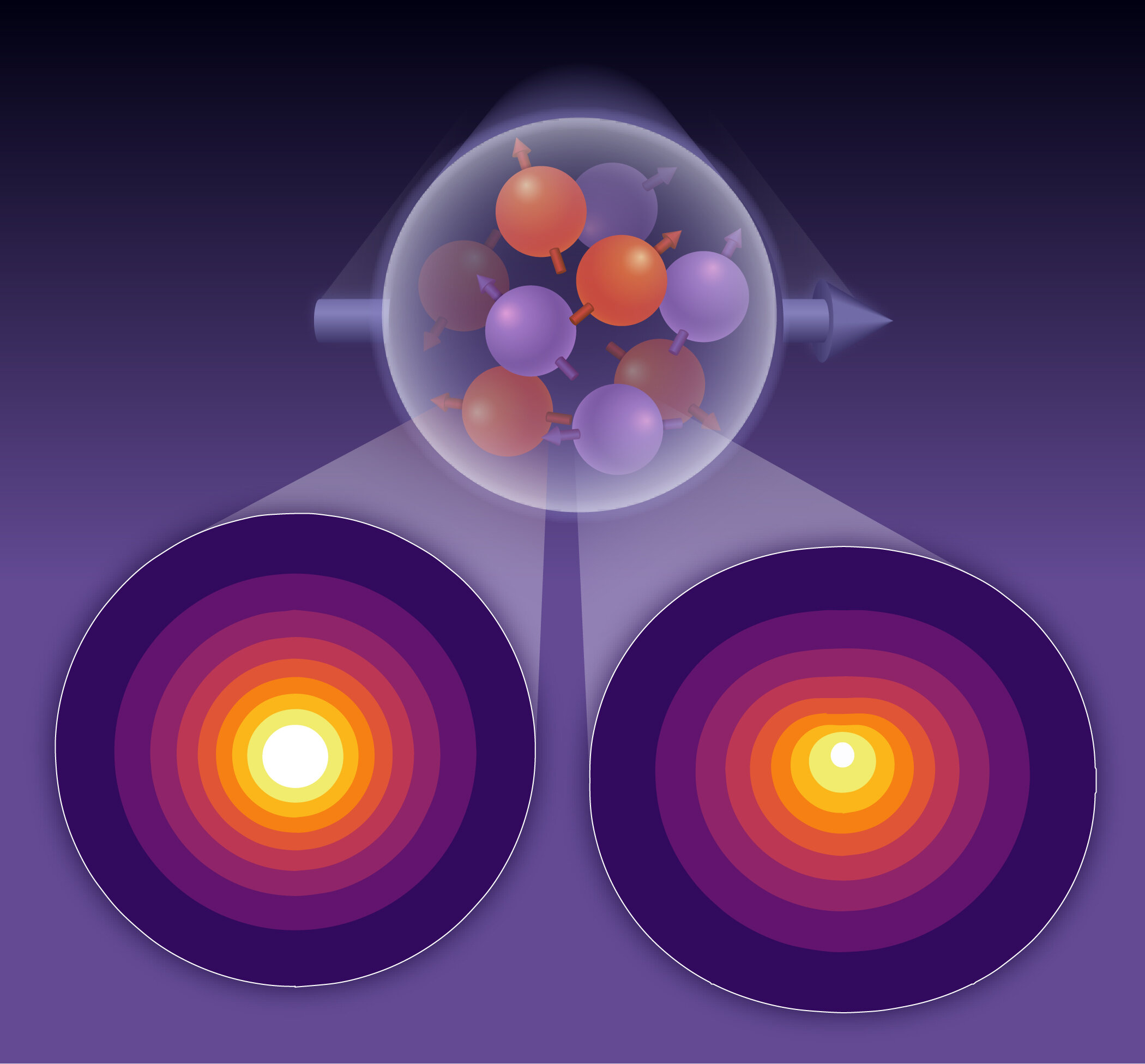This graphic showcases the movement of a proton approaching the viewer at nearly the speed of light, with its spin aligned horizontally. At the bottom, two images depict the spatial distributions of up and down quarks within the proton. The collaboration of nuclear theorists from Brookhaven National Laboratory, Argonne National Laboratory, Temple University, Adam Mickiewicz University of Poland, and the University of Bonn in Germany has utilized supercomputers to predict the characteristics of these quarks. The study, recently published in Physical Review D, has highlighted significant distinctions between up and down quarks.
Swagato Mukherjee, a co-author from Brookhaven Lab’s nuclear theory group, commented on the significance of this work, stating that it is the first time a high-resolution map of quarks within a proton has been obtained. The calculations suggest that up quarks are more symmetrically distributed and have a shorter range compared to down quarks. These differences imply that the two types of quarks may have varying contributions to the structural and fundamental properties of the proton, such as its internal energy and spin.
Martha Constantinou, a co-author from Temple University, emphasized that the calculations provide valuable insights for interpreting data from nuclear physics experiments that explore the distribution of quarks and gluons within the proton. These experiments are currently being conducted at the Continuous Electron Beam Accelerator Facility (CEBAF) at Thomas Jefferson National Accelerator Facility, with plans for higher-resolution versions at the future Electron-Ion Collider (EIC) at Brookhaven Lab.
The experimental technique involves high-energy electrons emitting virtual particles of light, which then scatter off the proton, altering its overall momentum without causing it to break apart. By studying this momentum change, scientists can gain information about the quarks and gluons within the proton, similar to an X-ray imaging technique for understanding the building blocks of matter.
The researchers developed a novel theoretical approach to simulate the momentum changes of the proton efficiently. This method allows for modeling numerous momentum transfer values within a single simulation, improving computational efficiency. Shohini Bhattacharya, a physicist from Brookhaven Lab’s nuclear theory group and the RIKEN BNL Research Center, played a crucial role in developing this new formalism, which grants access to the distribution of quarks and gluons within a proton.
To solve the complex equations of quantum chromodynamics (QCD), the theory that describes quarks and their interactions, the scientists employed lattice QCD. This technique involves representing quarks on a discrete 4D spacetime lattice, allowing for the study of quark arrangements over time. By running simulations on powerful supercomputers, the researchers gained valuable insights into the energy-momentum and charge distributions of up and down quarks within protons.
The study also provided insights into the spin contribution of quarks to the proton. Analyzing polarized protons, which have their spins aligned in a specific direction, the researchers discovered that the momentum distribution of down quarks is asymmetric and distorted compared to up quarks. These findings suggest that the different contributions of up and down quarks to the proton’s spin arise from their distinct spatial distributions. The calculations indicated that up and down quarks can account for less than 70% of the proton’s total spin, implying a significant contribution from gluons.
The experimental findings from Brookhaven Lab’s Relativistic Heavy Ion Collider (RHIC) support the idea of a substantial gluon contribution to spin. The forthcoming Electron-Ion Collider will delve into this question further, and the new theoretical predictions will provide essential information for comparison and data interpretation. The combination of theory and experiment is crucial for obtaining a comprehensive understanding of the proton’s inner workings and the forces within the atomic nucleus.
Denial of responsibility! TechCodex is an automatic aggregator of the all world’s media. In each content, the hyperlink to the primary source is specified. All trademarks belong to their rightful owners, and all materials to their authors. For any complaint, please reach us at – [email protected]. We will take necessary action within 24 hours.

Jessica Irvine is a tech enthusiast specializing in gadgets. From smart home devices to cutting-edge electronics, Jessica explores the world of consumer tech, offering readers comprehensive reviews, hands-on experiences, and expert insights into the coolest and most innovative gadgets on the market.


